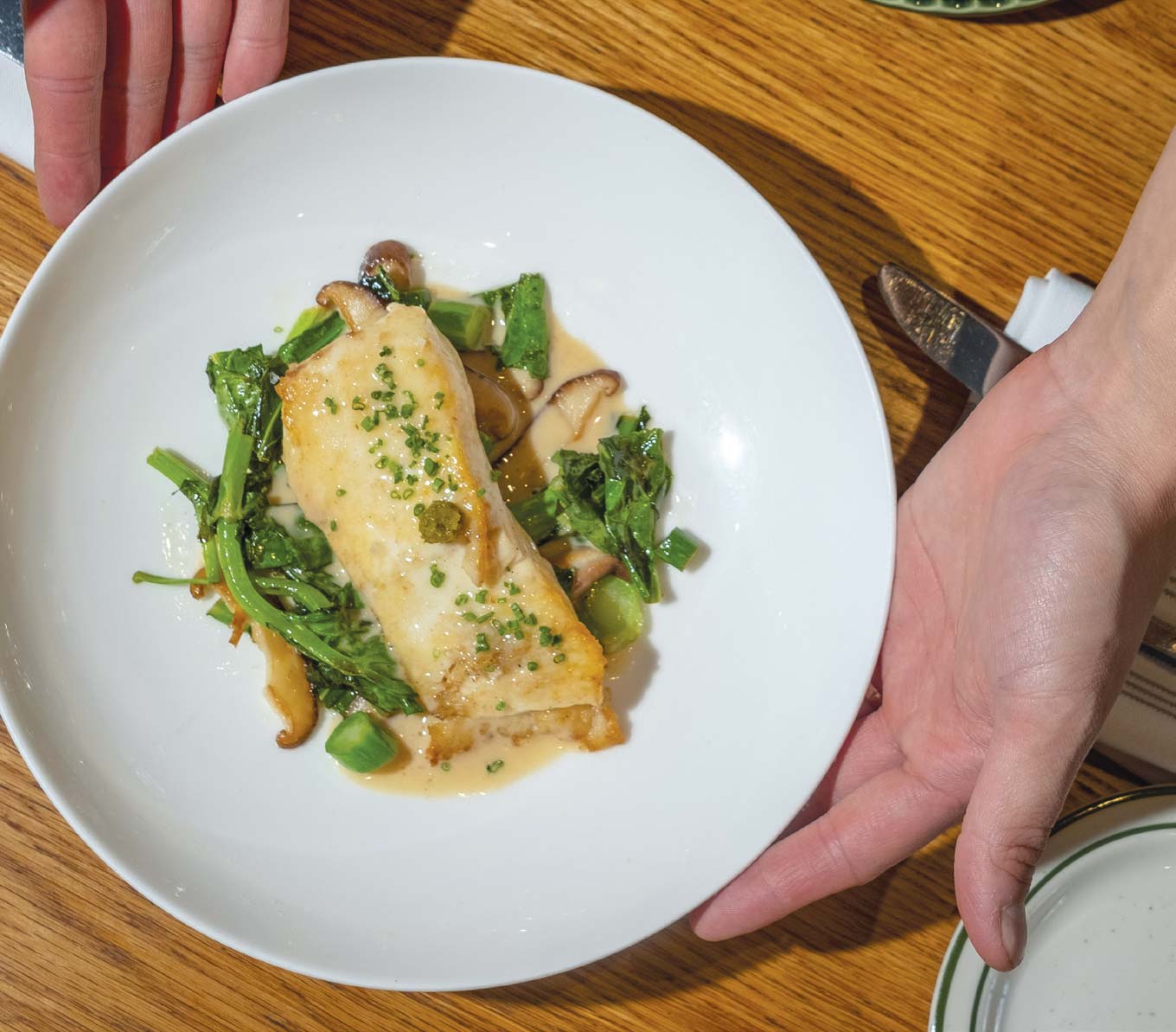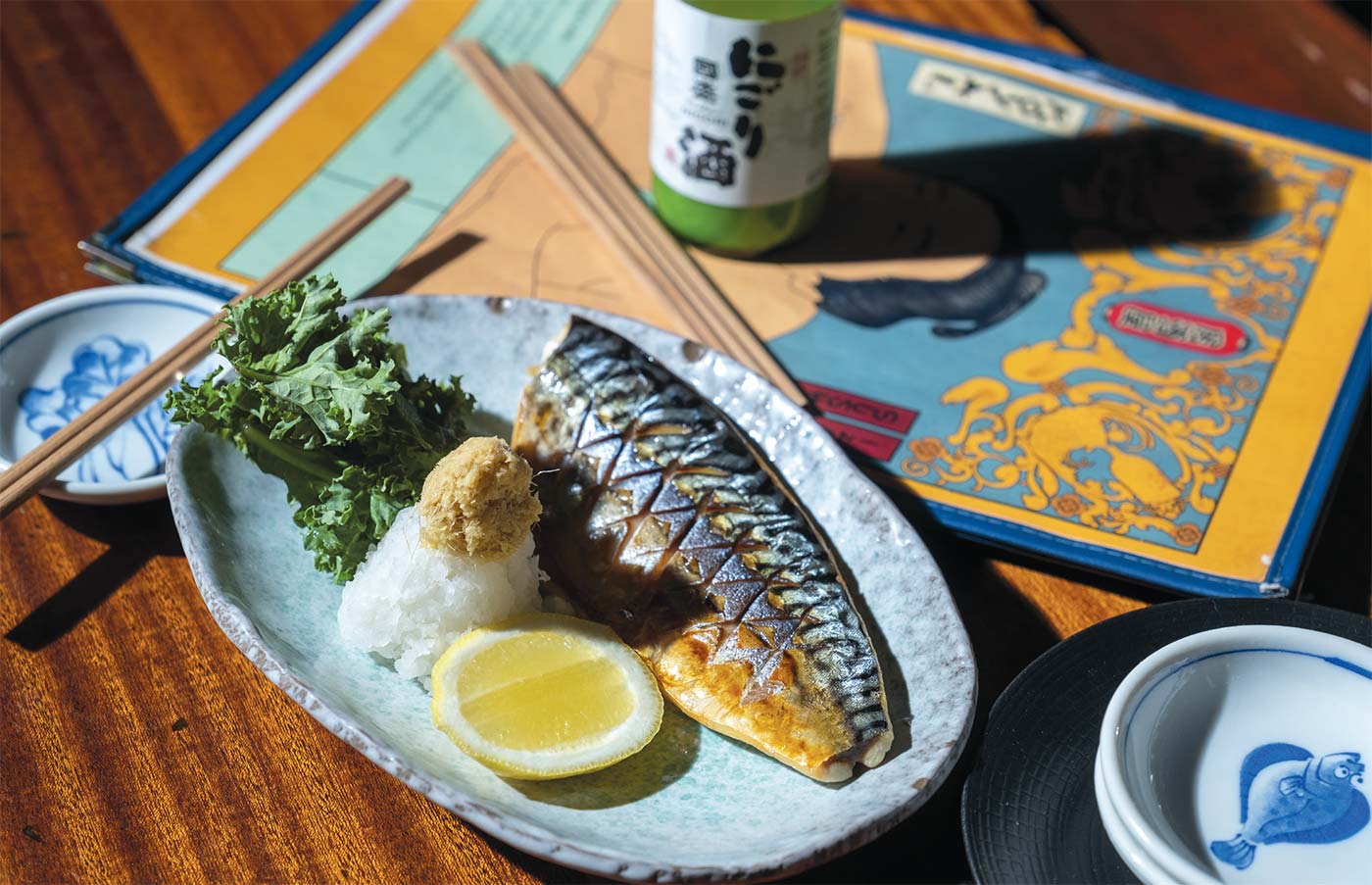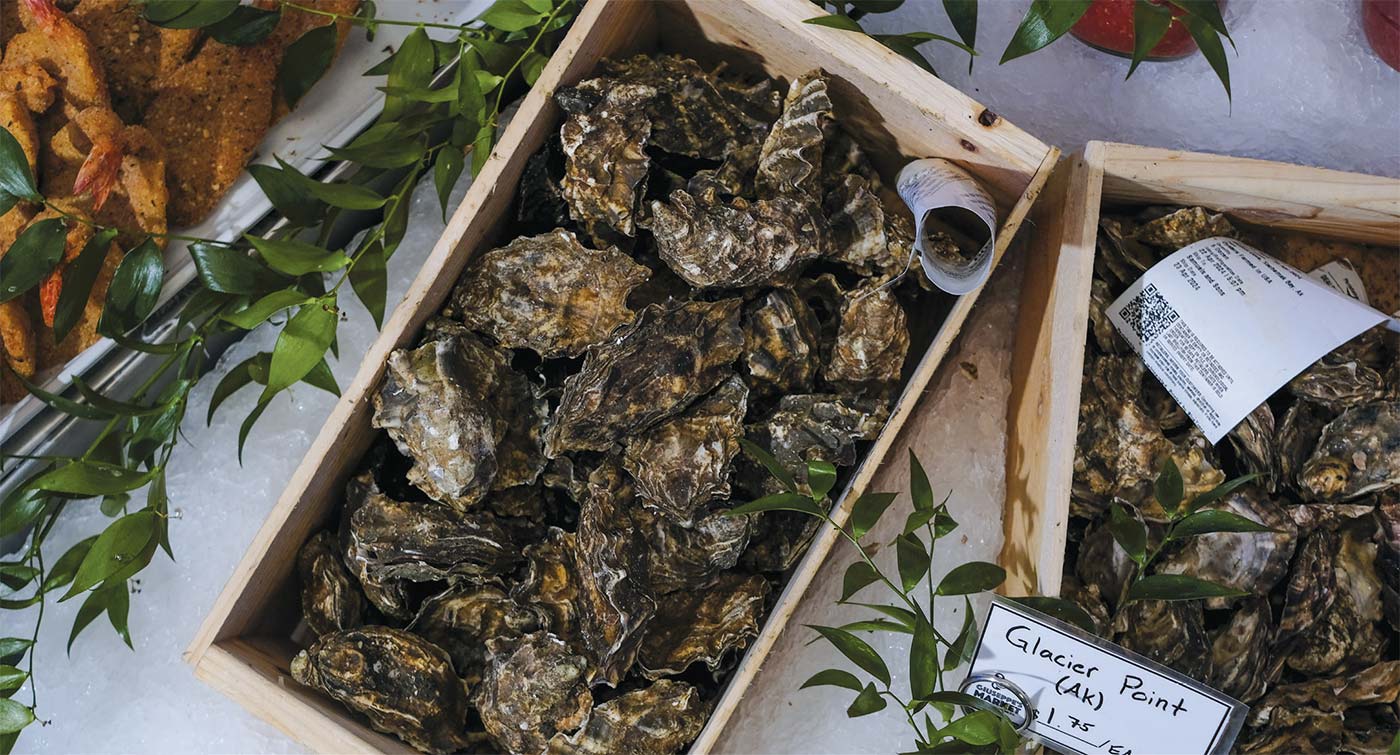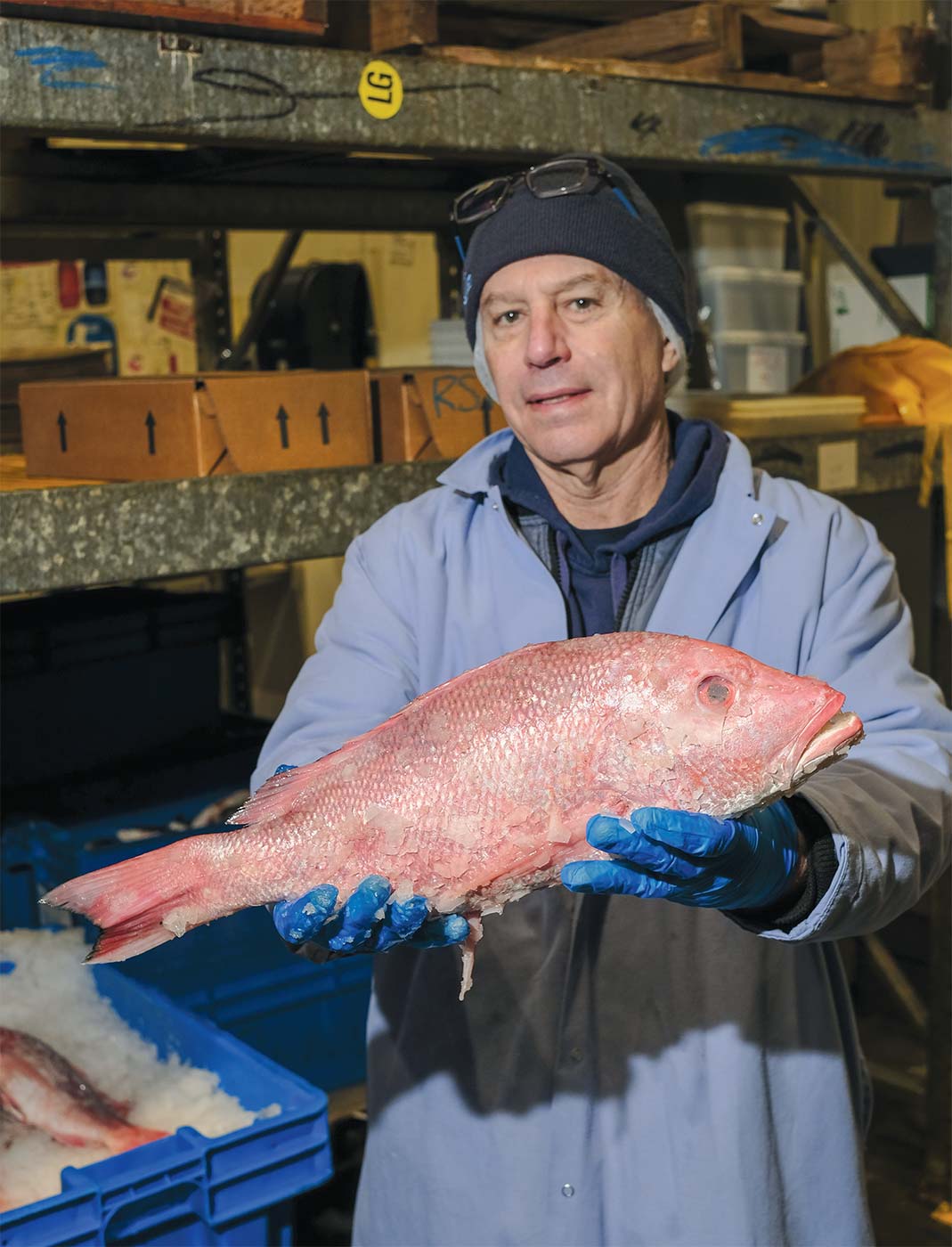High Tide for Seafood: Meet the Chefs, Fishmongers, and Purveyors Educating Diners on Undervalued Local Fish

PHILADELPHIA HAS LONG EMBRACED the Mid-Atlantic’s oceanic flavors. Catch-of-the-day dinners down the Shore like oysters, linguine with clams, whole fish, and crab gravy aren’t limited to summer memories—they’re also found inland on many Philly restaurant menus. What’s more, contemporary seafood-centric restaurants and direct-to-consumer organizations have blossomed in Philadelphia, presenting diners with a whole different fish experience beyond filets that dominate menus (salmon, sea bass, cod, and tuna). Offerings include raw preparations, tapas-style plates, and offcut specials that also introduce diners to overlooked local species.
We spoke to chefs and other industry experts about the rise of seafood dining and the challenges of navigating seesaw factors like climate change, rising costs, and the public’s fish preferences.

Butter roasted halibut with a Dashi brown butter beurre blanc, yuzu kosho, gai lan, and shiitake mushrooms at Little Fish.
BEYOND SUSHI: ENTER THE CRUDO
“Seafood is a time-and-place thing for me,” says Greg Vernick, chef-owner of Vernick Food & Drink, who grew up eating fish like trout once a week at home or broiled flounder with a side of pasta at Jersey Shore fish shacks.
He developed his “fish curriculum” under Jean-Georges Vongerichten. The world-famous chef and restaurateur is known for pairing French techniques with Asian ingredients. Vernick continued learning from purveyors about cuts and preparations and eventually he mastered fish butchery.
When introducing Vernick Food & Drink’s crudo section over a decade ago, he successfully combined sushi fish with unlikely ingredients. His sea urchin with scrambled eggs became a trademark. Vernick’s crudo menu turned diners into new fans of raw fish, but he credits long-standing relationships with local vendors like Samuels Seafood, Viking Village, and Local 130 Seafood with helping chefs feel more confident in serving raw fish.
Chef Dave Paterniti remembers eating his way through the Vernick Food & Drink raw fish section years ago.
“I was learning while I was eating,” says the Florida native. The five-dish crudo menu opened his mind to delicate raw fish flavors beyond the shrimp, tuna, and salmon typically served in that era. It’s what attracted him to work at Vernick Fish, where he is now chef de cuisine. He thinks Fish’s large open kitchen allows guests to see high-quality fish preparations first-hand, making them feel more comfortable ordering a spicy fluke ceviche from the raw bar or a tuna rice bowl for lunch. “Kids aged 8 or 9 years old crush crudos here,” says Paterniti.
“Crudos are not a fad,” says Little Fish chef-owner Alex Yoon. They’re “one of the better ways to get introduced to fish.” People love sushi, after all, he says. Yoon slowly added Korean and Southeast Asian flavors and ingredients to make the menu his own and was pleasantly surprised by the popularity of shaved raw scallops with soy-chili oil on toast and soy-marinated raw crab.

(R): Little Fish Chefs Alex Yoon and Jacob Trinh prepare a halibut dish. (L): Royal Izakaya gets in whole Norwegian mackerel, which is filleted, deboned and then salt cured for their saba shioyaki, which translates to salt grilled mackerel, and has remained a staple dish on their menu since opening.
PHILADELPHIANS CAN’T GET ENOUGH OYSTERS
Since 2012, Lisa Calvo’s Sweet Amalia Oyster Farm has rallied a chef network of oyster ambassadors at restaurants like Oyster House, Laurel, Royal Izakaya, and Fork. In addition to more oyster farm visits from chefs and tourists, Calvo says demand for her oysters skyrocketed during the summer of 2022.
“We’re in it together,” says Calvo, who believes better-informed customers will result in a better dining experience. She regularly engages customers in discussions about price increases, labor costs, her sustainability goals, oysters’ environmental benefits (oysters filter the water), and their good-for-you qualities (oysters are loaded with vitamin B12, zinc, and antioxidants and are efficient protein sources).
Sweet Amalia Market and Kitchen co-owner and Executive Chef Melissa McGrath agrees, saying customers are interested in seeing the behind-the-scenes oyster process—farming methods, distribution, and shucking. For her, it’s important to support that curiosity and treat oysters with respect in simple, seasonal dishes and strive for accessible pricing. Sweet Amalia oysters run $21 for a half-dozen and tend to sell at $3–$4 apiece at restaurants.
Third-generation Oyster House owner Sam Mink says that, despite rising prices driven by the pandemic, inflation, and labor, oysters remain popular., They sell for $4 each ($2 during happy hour) and are featured in shucking classes and their annual Shuck Fest events to meet demand.

The mackerel is broiled and served with the simple, traditional garnishes of grated daikon and ginger to cut through the richness and fattiness of the fish, along with a squeeze of lemon.
FISH CHOICE AND VARIETY MATTER
With volatile fish stocks on their minds, more chefs are looking to offcuts and lesser-known fish to fuel their creativity. Chefs Justin Bacharach and Jesse Ito of Royal Izakaya use fish heads and collars from Kinmedai (snapper), Madai (porgy), and Nodoguro (seaperch) as kitchen specials and shareable platters that showcase traditional Japanese dining customs while maximizing their fresh whole-fish deliveries. There are fried fish heads served with yuzu ponzu sauce and cabbage; mackerel served with grated daikon and ginger to cut through the fish’s oily, fatty richness and cleanse the palate; and salt-broiled yellowtail collar with pickles and ginger best eaten with soy sauce and grated daikon radish.
“We’re in a lucky position with a captive audience to do weird stuff and people will at least try it,” Bacharach says, adding that guests increase their level of trust when eating something familiar in these dishes, which are popular with families and groups, too.
Chef de Cuisine Kevin McWilliams at Laurel is also strategic with his fish-forward menu. He features daily fresh, lesser-known fish with creative presentations like black bass crudo in clarified harissa broth, pickled mussels with paprika oil under shiso leaves (used to pick up each bite), and tuna crudo resembling watermelon slices in olive oil jam and granita.
“At the end of the day, it has to taste good, it has to be the best quality possible, and hopefully be as local as possible,” says McWilliams.

Kumamoto Oysters at Giuseppe’s Market at Samuels Seafood.
EDUCATING HOME COOKS ON AQUACULTURE
Chefs aren’t the only ones thinking more carefully about what seafood they buy. Home cooks are seeking out local and sustainable options, too. Eating with the local ecosystem and balancing inclusive pricing is top of mind for Fishadelphia. Initially a student-run fish stand founded by former high school teacher Talia Young, Fishadelphia is a community-supported fishery that works with docks, fishers, and shellfish farmers in New Jersey to provide “locally abundant and seasonally available” fish to their 150+ members. Memberships are on a sliding scale, with 16 pickup locations across Philly, and on pickup weeks members get an email with info about the fish, the harvester and vessel, and a recipe.
“As people participate in the program, they start to develop a relationship with what’s local and be in rhythm with nature and seasons,” says Fishadelphia’s Feini Yin, who first joined Fishadelphia as a customer. The organization provides more familiar seafood like tuna, scallops, black sea bass, and fluke (summer flounder) but species like tilefish, monkfish, and skate are increasingly sought-after.
Mike Kenlay of Local 130 Seafood says many seafood customers need help deciding which fish is best for their needs. He often clarifies perceptions and nuances, like what it means to eat New Jersey porgy versus a Mediterranean dorade, and encourages questioning local supply chains.
“The closer the seafood is harvested near you the better it is for our country and our community,” Kenlay says.
Samuels Seafood co-owner Anthony D’Angelo agrees, advising chefs on alternatives to higher-priced fish (summer halibut becomes winter mahi mahi) and exchanging information on wild seafood (concerns about overfishing) and fish farming (harvesting fish in controlled water environments).
“Aquaculture—mariculture, or farm-raised seafood—is basically cultivating the product and requires supporting farmers,” says D’Angelo. “Trust your fishmonger, ask questions, and learn from them.”
Austin Schwerzel says “maintaining a sustainable cycle” is at the forefront of Viking Village’s mission. The 100-year-old family-run commercial fishery uses social media to share local data, monitors species daily, and partners with restaurants to promote undervalued fish. Boosting exposure and transparency is key.
The best way to keep enjoying seafood and shellfish as a climate-friendly animal protein? It’s all about not being afraid to try new fish native to local waters.

Samuels Seafood Company VP of Product Development Joe Lasprogata shows off an American Red Snapper




